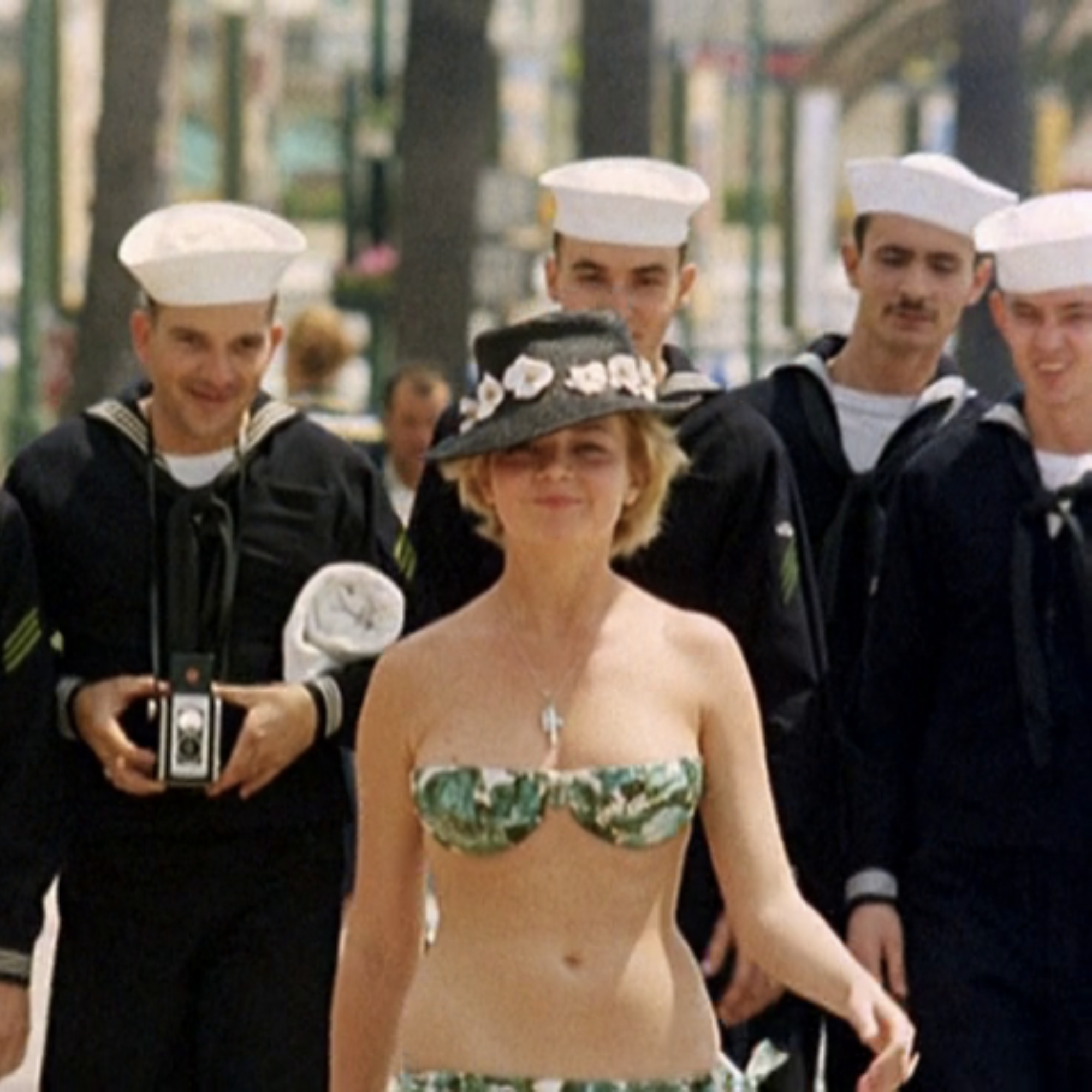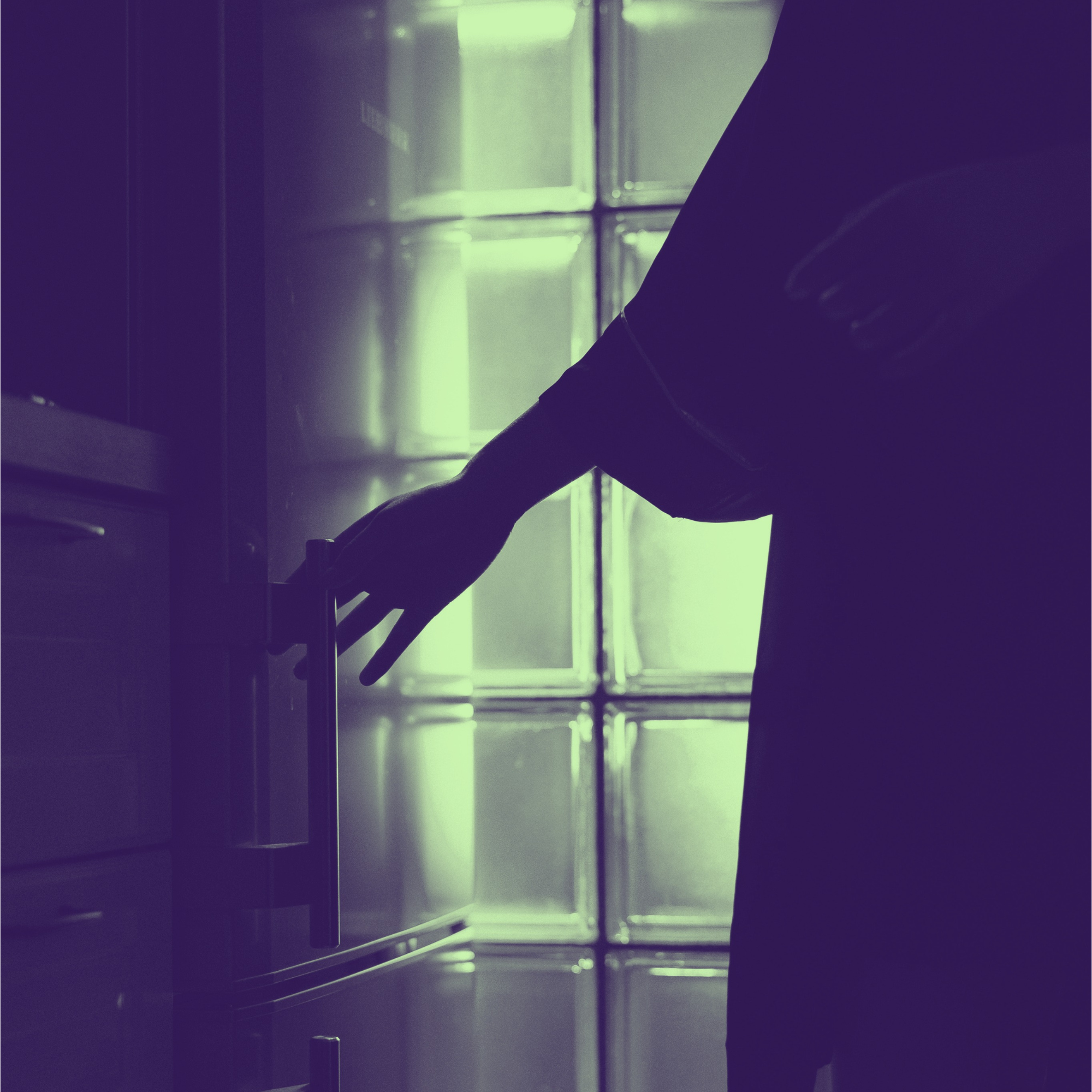- Magazine Dirt
- Posts
- Introducing Lifestyle
Introducing Lifestyle
Too late for the last thing, too early for the next.

The Four Seasons Restaurant. Image Credit: Geslin George, Wikimedia Commons
Daisy Alioto introduces an updated version of the essay What Is Lifestyle, which was self-published in 2020.
It’s January 2022. I’m sitting in a bar in Brooklyn Heights, waiting for an editor I know from the internet but have never met before. I open the copy of David Graeber’s Debt I’ve been carrying around in my purse. My husband has stamped the inside cover using the home library system he found in the lobby of our building, on top of the mailboxes. People often leave things there with hastily scribbled notes. “Free” or “Please take” or sometimes the double-edged exhortation, “Help yourself.”
Inside of Debt, there is also a check with DEPOSITED circled in pen being used as a bookmark, made out to my husband and I from two of his relatives. As I dig into my purse again to look for a pen, I brush against a foil-wrapped gold candy taken from a Felix Gonzalez-Torres work at the former Met Breuer. The artwork, “Untitled” (Portrait of Ross in L.A.) (1991), represents the wasting away of the artist’s partner, Ross Laycock, from AIDs as the candies are removed by visitors.
I am struck by how, in these few minutes waiting for the editor, there are so many reminders of the ways that storage runs our lives–from libraries and archives to banks and treasuries and even art museums.
This isn’t the first time I’ve had this thought. In 2020, I self-published a long essay called What Is Lifestyle? It took me over a year to research and write. I’m afraid I will never be done with it. I wanted to create a framework for understanding the concept of American lifestyle as it has been used in the 20th and 21st centuries.
Storage was a crucial piece of this story in the four major movements of lifestyle that I observed. I didn’t call them movements in the piece, but this is roughly how I imagined them:
MOVEMENT ONE: The Industrial Revolution. More stuff in the world, more things to accumulate. An industry develops to accommodate this: storage.
MOVEMENT TWO: The word lifestyle. The beginning of mass marketing and focus groups that rely on individual memories to induce people to buy into brands and stuff. Magazines like LlFE that depict the American lifestyle in aggregate.
MOVEMENT THREE: The proliferation of individual photography. Culture becomes more bottom up. People perform their lifestyles on personal social media feeds. Magazines can't compete. Things become images of themselves.
MOVEMENT FOUR: People prefer the image to the thing. They collect images like they once collected things. They still store them, but digitally. They want to live forever.
Throughout the essay, I talked about historical figures who have had an outsized impact on the contemporary concept of lifestyle, even though they are not all household names: Edwin H. Land, who went for a walk in the desert with his daughter and came away with the idea for a camera that would change the world; The Bekins Family, whose moving and storage empire assisted the accumulation of goods; Florence Knoll, whose linear aesthetic taste would go on to form the basis for the Internet’s design; and iconic Black photographer Gordon Parks, who expanded the idea of the American lifestyle even as he cemented it in the pages of LIFE magazine.
The contemporary origins of the word lifestyle, I discovered, stemmed from psychotherapist Alfred Adler and sociologist and economist Max Weber. In his book The Science of Living Adler writes, “A pine tree growing in the valley grows differently from one on top of a mountain. The same kind of tree has two distinct life styles. Its style on top of the mountain is different from its style when growing in the valley. The life style of a tree is the individual expression of a tree moulding itself to its environment.” According to Adler, a person’s lifestyle is established in their earliest years of life: their sense of inferiority or superiority, security in relationships and means of striving towards a life goal. Like the tree in the analogy above, this lifestyle is revealed as a person moves through different environments. One might interpret this as an internalized view of lifestyle.
By comparison, Weber’s sociological definition of lifestyle is an external one. Weber writes that classes are stratified by their relationship to the means of production, while status groups are organized by consumption of goods, aka lifestyle. One’s lifestyle is determined by one’s life chances, basically economic, and hence the overlap between class and status.
Their long, horsey faces–like Modigliani’s mistresses–kept watch over everything.
Self-publishing What Is Lifestyle? wasn’t my first choice. But it felt important to put into the world with immediacy, because so much had changed for me in the prior year. I was hired at a prestigious literary review so famed for its cluttered office that images of the desks and shelves piled with books and papers periodically go viral on social media. The walls were lined with caricatures of famous intellectuals. Their long, horsey faces–like Modigliani’s mistresses–kept watch over everything. One day, a peculiar man in a large, brown overcoat came in. (I was always surprised by the writers who came through the office, outsized in reputation; they seemed so much smaller in the flesh.) He was introduced to me as David Graeber. He would be gone in less than a year.
“Most of the work we’re currently doing is dream-work. It exists only for its own sake, or to make rich people feel good about themselves, or to make poor people feel bad about themselves,” Graeber wrote in a short, posthumously published essay about COVID-19.
A few months into lockdown, I was laid off from the literary review. I got married over Zoom in my apartment in Peekskill, NY, moving boxes filled with my now-husband’s things just out of frame. Confined as we were to our homes, I thought that the world was moving away from our reliance on storage. In reality, we were just moving further into it. One friend was trapped in California paying for a storage unit in Queens she could barely afford. Another was waiting for the real estate market to cool, her possessions scattered across self-storage in three different states.
My parents began to do their own downsizing, driving my childhood belongings to me in batches. I called around to multiple self-storage facilities near where I live in the Hudson Valley and found they were all at capacity. The woman at the storage facility that did accommodate us said that in 16 years she had never seen anything like it. As soon as an old customer moved out, a new customer moved in–sometimes they didn’t even have time to sweep the unit in between.

Back to the bar in Brooklyn Heights. The book stamped with my new last name, the check already deposited in Bank of America, the foil-wrapped candy symbolizing a fraction of the artist’s dead lover. And now, something else: a virtual wallet on my phone filled with non-fungible tokens (NFTs) purchased with ethereum on the blockchain.
Perhaps the most surprising change in my personal life between publishing What Is Lifestyle? and 2022 was my entry into the world of NFTs and blockchain technology. The editor I was meeting reached out after reading my essay on the metaverse, the virtual world where people exist as avatars of themselves that they can purchase, outfit and accessorize–sometimes with cryptocurrency, sometimes not. Essayist Elissa Washuta refers to her first NFT, a purple-haired witch, as a “doll in a trunk.” The trunk, of course, is an app on her phone called a wallet–both as real and imaginary as the wallet I took out to show my ID at that bar.
The blockchain is a virtual ledger of transactions, the first truly storage-based currency. Nothing on the blockchain is subject to natural disaster. It can’t be damaged like the Picasso painting that Steve Wynn put his elbow through or the artifacts destroyed by ISIS at Palmyra. But in resisting climate change, data storage also accelerates it–even data associated with the websites the blockchain startups are trying to unseat.
Digital storage removes certain pollutants from circulation. An NFT doesn’t have to be packed and shipped. It doesn’t fly across the world for exhibition at a biennale in a sinking city. But it also presents new environmental problems, problems that correlate with natural disasters that dislocate people and their objects.
Objects themselves are going through a bit of an identity crisis in the sense that images of objects have replaced objects in the digital hierarchy. And now, with the acceleration of AI, generated images threaten to replace those.
Around 1943, Edwin H. Land–founder of the Polaroid Corporation–went for a walk in the Santa Fe desert with his daughter, Jennifer. He took pictures of the 3-year-old, as one does on vacation, and she asked “Why can’t I see the picture now?” According to company lore, that question touched off years of experimentation which ended with the introduction of the first Polaroid camera in 1948. However, today’s technological innovations seem oriented toward a question I don’t remember asking, “why can’t I BE the picture now?”
An influx of AI-generated images contributes to image inflation, more pictures than we can plausibly attach meaning to. Who has agency in this landscape? Is it the people making money online by pretending to be NPCs? It’s suddenly hard to situate the object of desire on digital platforms where lifestyle is primarily performed.
Since at least the neolithic period, the human drive to create memory and meaning with objects has contributed to our ability to draw upon a shared history. We’ve seen the transference of this same process to imagery. But can it work when memory is outsourced, primarily a function of computer “intelligence” rather than human? Is the computer an object or an agent, and does it have a lifestyle of its own?

Henry Luce appears in my original essay because of his role in circulating photographs of the American lifestyle to Americans, to the world, and ultimately bringing the world back to America. The photographer Gordon Parks shot for LIFE and helped fulfill this mission. When Luce co-founded Time Inc. in 1922 (I worked there from 2015-2016) he began with Time magazine, and followed up with Fortune in 1930 and the acquisition and revamp of the LIFE title in 1936.

"Sgt. Hubert E. Bankston, Jasper, Ala., reclines inside his deluxe foxhole," 17 October, 1944. Image Credit: Signal Corps Archive
Between LIFE and the launch of their next title, Luce penned an op-ed in LIFE called The American Century, which considered America’s world position on the cusp of overtly entering WWII. He spent a good portion of the editorial arguing that America already had entered the war. Certain isolated sentences from this February 1941 essay are disorienting: We didn’t want much to be in any kind of war but, if there was one kind of war we most of all didn’t want to be in, it was a European war…Now that we are in this war, how did we get in? We got in on the basis of defense. Even that very word, defense, has been full of deceit and self-deceit.
I’ve just checked my calendar, it’s still 2023. The whole essay is worth reading, if only for a glimpse at the mindset that laid the groundwork for the Marshall Plan and similar policies. It’s also very well written, a view into the head of the anti-isolationist Republican, the Ivy League nationalist, the patrician hawk–who in this case, was right about entering the war.
I’m sure Luce won fans with statements like, “America cannot be responsible for the good behavior of the entire world,” even if he lost them in the next sentence, “America is responsible, to herself as well as to history, for the world-environment in which she lives.” There is no space or time to talk about where this attitude leads, even for an unreformed government major (myself). But I think we can all agree that 'The American Century' did not end precisely in the year 2000.
The American Century was about war, yes, but it was also about media.
Instead, I would like to ask why such a man would choose to publish magazines. Why not go into politics? Be an orator? The piece is written like a sermon. Aside from the fact that Luce, like America’s current president, had a stutter, he didn’t need to go into politics or churchdom. He was already where the power was.
Luce again: “Once we cease to distract ourselves with lifeless arguments about isolationism, we shall be amazed to discover that there is already an immense American internationalism. American jazz, Hollywood movies, American slang, American machines and patented products, are in fact the only things that every community in the world, from Zanzibar to Hamburg recognizes in common.”
And why, also, publish the op-ed in LIFE? The photo magazine? Because he wanted Americans to understand the war in images, to see that they were already in it, that they would have to admit they were in it, that they would need to go further, and that they were becoming an image themselves. The American Century was about war, yes, but it was also about media. Did America win major wars after 1945? Sure, one out of five. Did America invent things? Yes! The iPod, SaaS, and most importantly–Dippin' Dots. We put a man on the moon just to take pictures. America was the best at circulating images. We were the best lifestyle brand. That’s what we’ll remember–it’s the only evidence we have.
How bizarre, then, to witness the 21st century turn of American capital away from culture and toward technology, as if this technology could exist without the words and images that make it relevant. Technological ideas rely on cultural ones in the same way that personhood relies on objecthood, and vice versa. We can define ourselves by opposition up to a point, but in a society that cares about making meaning the two need each other. How much would you spend to save America’s greatest export? If you are a studio staring down a striking actor, apparently, not enough. If you are a certain type of investor, maybe nothing.
The high profile venture capital firm Andreessen Horowitz (a16z) currently invests along a thesis called American Dynamism, backing, “founders and companies that support the national interest, including but not limited to aerospace, defense, public safety, education, housing, supply chain, industrials and manufacturing.” These companies may work with the government; they may compete with the government. It’s The American Century: Elon’s Version…sure, fine. It’s not the firm’s only thesis, I just think the parallels are interesting, given what actually worked for the national interest last century.
A16z founder Marc Andreessen has gone through periods of resembling Luce, though a January 2023 piece in The Information detailing his troubled history with the media business went with “Citizen Marc”. His record is roughly on par with America’s post-1945 wartime wins. “Andreessen’s drive to mold the media to his liking has produced a few lasting wins and a lengthy series of flops,” The Information writes. “Increasingly, he became convinced that he no longer needed journalists to broadcast his thoughts or market his firm, a belief girded by a conviction that online publishing platforms had grown powerful enough to displace the traditional gatekeepers of information and reputation.”
A16z general partner Katherine Boyle argues elsewhere, “Though the Manhattan Project and the Moon Landing happened when America was arguably at her most dynamic, the technology sector is the only sector of the American economy that has maintained its vibrancy, dynamism, and growth through innovation over the last 25 years.” The rest of the American experiment is apparently being propped up by Silicon Valley noblesse oblige. That’s one story.

Here is another story.
We’re amid a powerful wave of nostalgia for Old New York. Not the one that entered lockdown, but even older. Restaurants are springing up to accommodate the power lunch, but the Four Seasons Restaurant, the aspirational power lunch spot of the 60s, is gone. The restaurant initially fell from grace in the early 70s but after a transfer of ownership (smoothed over with an ad campaign by none other than George Lois) surged back in the late 70s and 80s.
The Four Seasons debuted with a $50,000 annual horticulture budget.
The restaurant’s regular guests belonged to the world of Henry Luce and Gordon Parks, and to a certain extent, Florence Knoll, whose couches and settees featured in the interior. Only four guests were important enough to always get the same table, one of them was Simon & Schuster editor-in-chief Michael Korda. Lunch at the Four Seasons was for people like Anna Wintour, Barry Diller, Samuel Irving Newhouse Jr. They are not the winners of a technology-driven economy, but “not dynamic” would be a strong accusation. (Flung by a different type of rich person.)
The Four Seasons debuted with a $50,000 annual horticulture budget. Remember Adler? “The life style of a tree is the individual expression of a tree moulding itself to its environment.” The four fig trees inside the restaurant required special care. According to a 1959 issue of Progressive Architecture, they needed “supplementary lighting…from sunrise to opening time” provided by mercury vapor lamps. “Unfortunately, muted light stimulates plants into spindly growth,” and the room temperature was lowered by “as much as 8 degrees” each night after closing to counteract that. Completely unsuited to their environment, the fig trees found a way to survive through cultivation. Too beautiful, too aspirational, too important to let die. Are we fig trees, or are we rockets?
The restaurant’s original location inside the Ludwig Mies van der Rohe and Philip Johnson-designed Seagram Building closed in 2016 and everything inside was auctioned off. During the auction preview, I walked the perimeter of the space with my best friend. It felt important to bear witness, although we had never dined there, and would not be able to afford anything at auction–not even one of the pieces of tableware, which took nine months to design, right down to a set of bread baskets which sold for $10,625.
I took pictures, I am looking at them in my camera roll now, but the opulence of the Four Seasons does not read on an iPhone camera, because it was not made to be viewed through a lens. The pool looks jaundiced. Each leather Brno Chair (designed by van der Rohe) is backlit into shadow–their chrome arms the only visual cue within the black mass.
What I remember most from that day is the sensation of being too late for the last thing, too early for the next. But maybe a lifestyle always feels that way.

FICTION WEEK
|

STAFF PICKS
|
|
|
|
|
|







